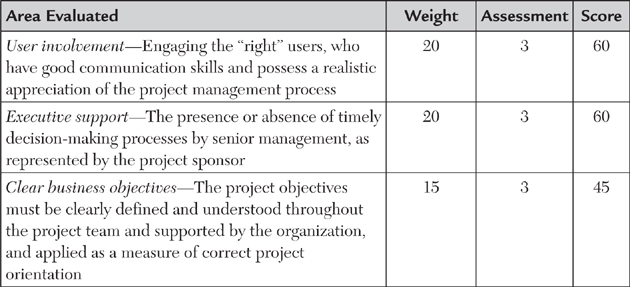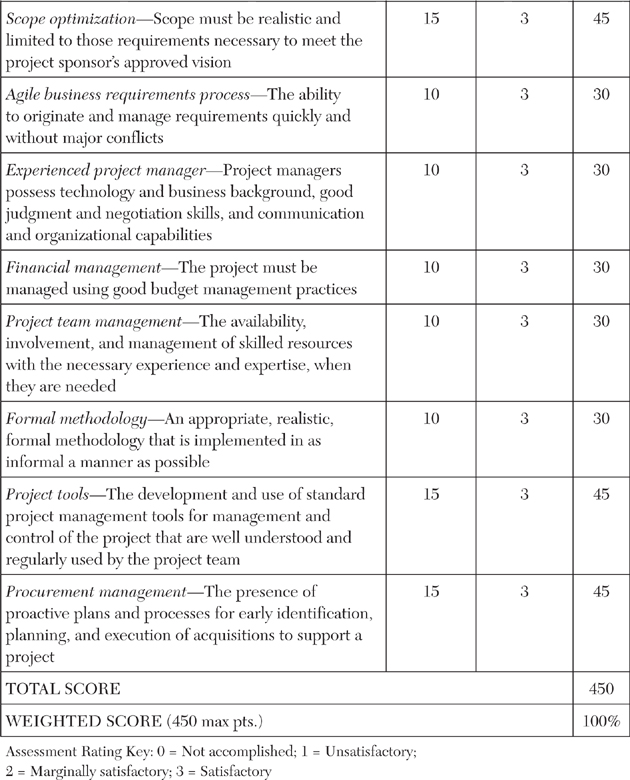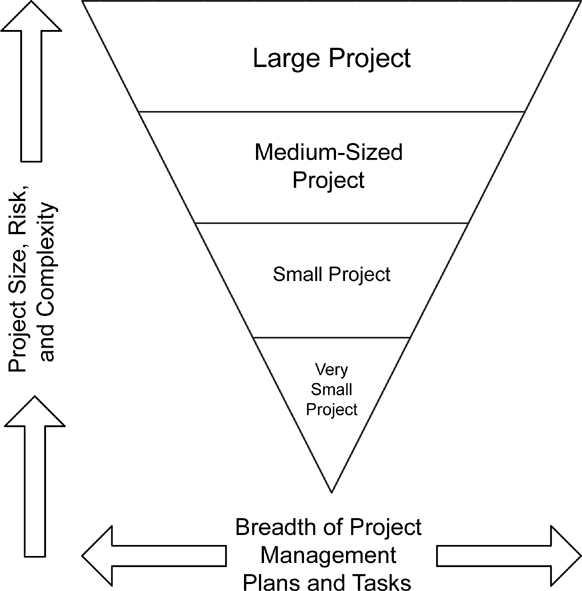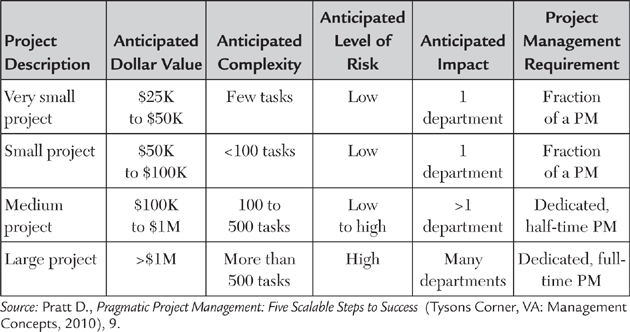
Download PDF Excerpt
Rights Information
With constrained schedules and anxious stakeholders eager for results, the typical IT project team doesn't have the luxury of wading through lengthy tomes to find solutions. The IT Project Management Answer Book guides you to the specific answers you need to successfully conduct and complete your IT project.
Written in an easy-to-use question-and-answer format, the book covers all aspects of managing an IT project, from initial organizational issues to closeout. Following the classic project management processes, author David Pratt builds on the basics to offer valuable insights not found in other resources, including:
• Proven techniques such as the best way to manage defects
• How to create performance standards for outside contractors
• How to develop a user's manual
For more technically inclined team members, the author's plain-speak approach presents a refreshing view of the IT world. For those less technically oriented, he describes the tools and solutions for dealing with IT project challenges in an accessible, straightforward way. Let this information-packed resource lead you and your team to IT project success.
Find out more about our Bulk Buyer Program
- 10-49: 20% discount
- 50-99: 35% discount
- 100-999: 38% discount
- 1000-1999: 40% discount
- 2000+ Contact ( bookorders@bkpub.com )
With constrained schedules and anxious stakeholders eager for results, the typical IT project team doesn't have the luxury of wading through lengthy tomes to find solutions. The IT Project Management Answer Book guides you to the specific answers you need to successfully conduct and complete your IT project.
Written in an easy-to-use question-and-answer format, the book covers all aspects of managing an IT project, from initial organizational issues to closeout. Following the classic project management processes, author David Pratt builds on the basics to offer valuable insights not found in other resources, including:
• Proven techniques such as the best way to manage defects
• How to create performance standards for outside contractors
• How to develop a user's manual
For more technically inclined team members, the author's plain-speak approach presents a refreshing view of the IT world. For those less technically oriented, he describes the tools and solutions for dealing with IT project challenges in an accessible, straightforward way. Let this information-packed resource lead you and your team to IT project success.
David Pratt, PMP, has more than 20 years of experience managing projects of all types and sizes, in a wide variety of industries as well as in non-profit and service organizations. A retired military officer and hospital administrator, he currently owns DHP Project Services, LLC. Dave is the author of The IT Project Management Answer Book and Pragmatic Project Management: Five Scalable Steps to Success. He currently teaches project management at South Puget Sound Community College in Lacey, Washington, where he led the curriculum design effort for the Project Management Certificate program.
Chapter

1
WHY PROJECTS SUCCEED
IT projects are notoriously risky endeavors. When confronted with the prospect of a new IT project, business owners and executives too often predict dire outcomes: “If the project delivers anything at all, it will most likely be late and over budget.”
That attitude seems a bit unfair, particularly when nearly one-third of IT projects meet their objectives, provide the full scope defined for the project, and do so on time and on budget. Even so, two out of three business owners and executives most likely share that perspective, because they sponsored the other two-thirds of the IT projects that struggled or failed.
So, what’s the difference between a successful IT project and an unsuccessful one? What makes one seem so effortless and another a frustrating mess?
The following questions and answers are intended to provide you with some of the information you will need to hit the target for your IT projects.
SUCCESS FACTORS
Q1 Why are IT projects considered so risky?
In its truest form, IT project management is about creating something where nothing existed before. Sometimes we modify an existing system in a way that has not been attempted in the past. Every time we take on a project, we develop something that, to some greater or lesser degree, did not exist before. Venturing into the unknown requires experience and professional stamina.
Have you ever stepped into a dark room? You know you must negotiate your way through a maze of furniture. There is a light switch somewhere in the room to illuminate your way, if only you could find it. The absence of that illumination promises bumped shins and more.
Sometimes taking on a new IT project feels like stepping into a dark room. If you have not walked the paths that lead to IT project success before and have no source of illumination, the future can be very hard to see.
Experienced IT project managers bring knowledge of what lurks in the darkness of that room. They have tried, failed, tried again, and succeeded. They know where many of the switches to light the way to project success can be found. Unfortunately, there are not enough experienced, trained IT project managers to go around.
The presence or absence of a qualified project manager has been identified as a key indicator of project success or failure. If there is one reason why IT projects are so risky, it is that the supply of experienced, trained IT project managers remains so low.
Anyone can hang out a shingle and call himself a project manager. In organizations where IT project management is not a core competency, management appoints project managers because of their technical skills or business acumen, or because they are the only ones available to do the job. Little attention is paid to whether the person possesses the necessary credentials or background to handle the complexities of an IT project.
So, what is the answer? What do you do when you need a project manager for a risky IT project and there isn’t one to be found?
The answer is to partner up. Sometimes that means pairing a good non-IT project manager with a good technical team leader who can supplement the project manager’s lack of IT background. At other times it means matching an IT technical resource who might be the best candidate for project manager with a solid business resource who can relate to the project team members and translate the organization’s needs into technical terms.
Q2 What are the key indicators of IT project success and failure?
Experience suggests that a handful of indicators can predict project success and can be relied upon. They include:
• User involvement—Relates to involving the right users, who will depend on the technical solution professionally and personally to meet their goals
• Executive support—Specifically related to how timely decisions are made regarding critical issues that impact the project
• Clear business objectives—The focus of the project must be on the business value that the project is to provide the organization, which is driven by a clearly articulated vision of the project’s deliverable solution
• Scope management—Delivering what the users of the new system need to do their jobs; avoiding extraneous functionality that might never be touched by the users of the system
• Business requirements management—The ability to be flexible, yet decisive, in shaping, changing, and managing project requirements
• Experienced project manager—Having a project manager on the team who has experience with projects of similar size and complexity within the industry on which the project is focused
• Financial management planning—The presence of objective tools for monitoring and interpreting a project’s financial status and relating that to project performance
• Project team management—Having access to project team members and subject matter experts with the requisite skills and knowledge to do the work necessary to provide an acceptable solution
• Use of a formal methodology—The availability of a project delivery approach that is formally identified yet executed as informally as possible
• Project management tools and infrastructure—The availability and application of tools to facilitate project success, such as schedules, collaboration tools, and scope management tools, and the ability to use and interpret the project artifacts produced by those tools
• Procurement management planning—Progressive and responsive procurement planning and execution processes that identify procurement needs and the best approach for filling those needs.
These indicators frequently form the bases of external quality assurance reviews of IT projects. A realistic assessment of whether the indicators are in place and show positive values reveals much about a project’s chance of success. An assessment tool commonly used for this purpose is provided in Figure 1.1.
FIGURE 1.1 Project Success Assessment Matrix


The goal is to identify these success factors in advance, address them early in the planning process for any project, and develop a realistic estimation of a new IT project’s ability to succeed. For ongoing projects, periodic assessment of the success factors and how they apply to the project can offer insight regarding how the project is progressing. Course corrections can then be made, if necessary, and focused on the area of the project most in need of attention.
Q3 How is business value defined in IT projects?
In project management parlance, an objective is defined as the business value provided to the organization. IT projects with well-defined business objectives relate well to the needs and concerns of the business owners who fund them.
From a practical perspective, IT project objectives are usually stated in SMART terms:
S—Specific. The focus of the objective should be on a single business value that relates to a core business strategy of importance to the organization.
M—Measurable. The business value should be quantifiable. The value should be stated in terms of percentage of increase or decrease, dollar value, or other measure. Note that “none” and “all” are quantifiable.
A—Assignable. One or more stakeholders in the organization should be willing to sign up as the sponsor for each specific objective developed for a project. If no one is willing to sponsor an objective, there is no practical reason for the organization to see the objective as valid. That objective would be considered out of scope.
R—Realistic. An objective should be reasonably achievable, given the constraints of money, time, available technology, and resources.
T—Time-bound. The business value identified by the objective should be achievable within a reasonable, defined period of time. Vague promises that things will get better over time by using a new technology are not enough to stimulate investment in something as risky as an IT project.
A good example of an objective for an IT project might be worded as follows:
The new financial management system will cost approximately $1.5 million and deliver a savings of $500,000 per year through better management of aged accounts receivable, beginning one year after system implementation. The Finance and Accounting Department sponsors this objective, which can be satisfied using a readily available, off-the-shelf software package.
Note that the example business objective is specific, in that it is focused on financial management. Measures are provided in terms of cost and expected return within a specific period of time. A group of stakeholders has stepped forward to sponsor the objective, and it is achievable using existing, off-the-shelf technology. This is an excellent project objective in that a clear value will be delivered to the organization.
We use the term IT project to define a project that has a significant IT component. The term is a handy one that lets people know that completing the project will require specific skills—IT skills. However, a successful IT project in today’s economically constrained world must provide a realistic, defined business value to the organization that sponsors and pays for the project. From that perspective, there is no such thing as a pure IT project. There are only business projects with heavy IT components.
Q4 How do project cost, complexity, and risk affect how a project should be managed?
IT projects come in all shapes and sizes. Some are so small that a project team can barely be put together before the project’s timeline has passed. The project’s cost is low; the project’s complexity is low. The risk level of these projects produces little concern. Management of simple, straightforward efforts delivered like these is often based on the simple intuition of the project team members, and that can be enough.
The more a project ventures onto uncharted terrain, the more risk, cost, and complexity rise. It takes longer to conceive of, design, and construct the technical solution if it has not been done before. More management is required. These projects often require more sophisticated and costly resources, and they carry more risk due to their unique nature. As a result, there will be more to plan, control, and coordinate, and more project management will be required than would be needed for a much simpler, less risky project.
The scope of a project’s needs is specifically related to the project’s size, risk, and complexity. Figure 1.2 provides a graphic representation of the relationship between the size of a project and the level of effort required to manage it. For a small, simple project, do a little project management; for a larger, more complex, costly, and risky project, do more.
PROJECT MANAGEMENT CONSIDERATIONS
Q1 Technical resources make the best IT project managers—right?
Organizations often assume that the resident IT technical expert would be a natural to fill in as an IT project manager. That can be a bad assumption.
IT is a technical field, but project management is a people and leadership discipline. Technical resources typically enter the field to write code, work with hardware, build databases, and so on. They often lack the interest, soft skills, and project management training necessary to manage a diverse team of technical and business staff.
FIGURE 1.2 Project Scaling Model

It takes more than technical expertise to manage an IT project. In fact, many in the IT project management field believe there is no such thing as an IT project per se. They insist that IT projects are actually business projects, undertaken to fill a business need. Although the project might have a substantial IT component, the main emphasis of the project is to fill a business need.
The answer is to partner up. Sometimes that means pairing a good non-IT project manager with a good technical team leader who can supplement the project manager’s lack of IT background. Other times, it means matching an IT technical resource who might be the best candidate for project manager with a solid business resource who can relate to the project team members and translate the organization’s needs into technical terms.
Whenever possible, appoint the best person available to manage the IT project, not the person the organization can afford to lose from his regular job. Hopefully, this person will have the training needed to organize and control the project from beginning to end. If not, get the person the training, whether he is a technical or business resource. If the person lacks the background and expertise but remains your best prospect for managing the project, consider assigning a mentor who possesses the background and skills. Many project management consultants seek work of this sort, where they can offer their skills and knowledge to help inexperienced IT project managers learn, survive, and thrive.
Q2 What approaches are available to help fill the qualified PM void?
Project manager mentoring and Project Management Offices are two excellent mechanisms available to organizations that seek to increase their IT project management maturity but might lack the depth of skills needed to manage IT projects effectively.
Mentoring connections can take many forms. One option is to hire a highly-skilled IT project management consultant from outside the organization to guide and train the project manager. This service is often referred to as project management oversight. The consultant is generally available on a regular basis to work with the project manager, provide guidance and best practice suggestions, and help problem-solve unusual situations.
Q3 Can anyone with project management experience manage an IT project?
The simple answer to this question is “No.”
It takes some appreciation of any industry to tune into the needs of a project. Consider one of the long-held thoughts about a project manager’s role—to relate the project’s vision and value to the project team. That person must have some appreciation of the industry in which an IT project is positioned to relate a project’s value to anyone.
Purists will tell you that project management is project management, no matter the industry in which one is working. To some extent, they would be correct, but the technologies, processes, and goals vary considerably from industry to industry. There is no place where that is truer than projects that contain a large IT component—the ones we often refer to as IT projects.
With the prevalent shortage of qualified IT project managers, what is an industry to do when the only person available to manage a project lacks a significant technical background?
The answer, again, is partner up!
Find someone who has the technical background needed to translate tech-speak into terms the project manager can handle, and make that person the technical lead for the project. A team consisting of a qualified project manager and technical lead can take just about any IT project down the right road and increase that project’s chance of success.
Q4 What skills does an IT project manager need to be successful?
First and foremost, the IT project manager needs an understanding of the IT discipline. Simply being a good technical resource is not usually enough to manage an IT project with an expansive, diverse project team membership.
For very small IT projects, a technical resource with some management experience might be well positioned to deliver a successful project. Good, straightforward management and task organization might be all that is required; i.e., set up a work plan, gather skilled resources, relate the goal of the effort to the resources, and get the work done.
For larger projects, where the risk is greater, the stakeholder community is more diverse, and the project team requires more and varied skill sets, a good manager with some IT skills might not be sufficient for the task. Something more is needed of the project manager. That something equates to:
• Leadership—The ability to get people to come together and do what they might not otherwise do on their own, and appreciate the value, the need of working together toward that common goal. No matter the challenge before them, if a good leader can bring a team together and relate to the value of reaching a goal, the team is more likely to embrace that goal regardless of the obstacles they might face.
• Communications skills—The demonstrated ability to listen; to speak, write, and organize thoughts rationally; and to relate those thoughts to a diverse group of individuals. Communications underpins the success or failure of every project, particularly when the number of stakeholders is great. The project manager must be a communications leader, even if a dedicated communications manager is assigned to the project.
• Interpersonal skills—The ability to relate to others with varied backgrounds, skills sets, and backgrounds, in a variety of stressful business, political, and socially dynamic situations. It is easy to organize resources and encourage them toward a goal when things are going well. It takes real skill to relate to those same resources when they are in crisis, professionally or personally, and help them to get back on track and retain their place on the project team.
• Experience with IT projects—There is no replacement for experience. Good IT project managers bring a background of working in the IT industry, or at least some technical training to augment their business background. They relate to the technical staff in a manner that facilitates the interpretation of business requirements into technical terms that can be linked directly to how the solution should be constructed. Absent this experience, good IT project managers recognize the need to gather experienced technical resources around them, to complement their own skills.
• Problem-solving skills—Someone once said that a project is a problem scheduled for a solution. A good project manager can accurately define the problem statement that drives the project, identify potential solutions, direct the team toward the best alternative solution, and make that solution a reality.
• Time management skills—All projects work under time constraints. Managing to a schedule is fundamental to project management. Project managers must recognize these requirements and possess the ability to organize tasks and resources within time constraints.
• Ability to develop people—The ability to recognize the capabilities and limitations of team members, identify the gaps between the project’s needs and the team members’ abilities, and develop the team’s membership to the point where the project can be successfully completed. The ability to accurately assess a team member’s skills in a technical, business, or interpersonal area and then determine how to develop those skills in that team member is key to a project’s success. Few teams assigned or hired for a project have all the tools they need to be successful. It is up to the project manager to identify and fill the gaps in the team’s capabilities, using the resources available to the project.
• Ability to handle stress—Projects never seem to have enough time, money, or other resources to meet stakeholder expectations. This creates a lot of stress for the project manager. Effective IT project managers manage their own stress, recognize stress in others, and deal with it appropriately. It is essential that the IT project manager be perceived as the calm center of the storm during times when stress climbs to its peak. If the project manager appears ragged and out of sorts, the team loses confidence in that person and in their ability to function as a team. A critical item in the project manager’s toolbox is effective techniques for anticipating, recognizing, and dealing effectively with stress.
IT project management is much more than technical skills or the ability to develop a project schedule using project management software. For an IT project manager to be successful, a professional toolbox that contains the skills described above is essential. The good news is that you can learn each skill by attending courses at training centers, community colleges, professional organizations, and so on.
Q5 How do you determine the size of a project in order to scale your project management effort appropriately?
Several dimensions can be used to assess the relative need for project management for any IT project. They are depicted in the table in Figure 1.3, which can be used as a guide when determining the depth of project management resources, processes, and bureaucracy to impose on any IT effort. As a point of reference, consider the column on the far right of the table, where a relative number of project management full-time equivalent positions are aligned with the relative size, complexity, risk, and cost of the project.
FIGURE 1.3 Project Scaling Guide

The concept of sizing project management efforts to fit the unique size, cost, complexity, and risk associated with a project is referred to as scaling. The goal of scaling a project is to provide the maximum benefit for the minimal investment of money and resources. Grasp this concept, and you can avoid the two traps so many fall into when they are confronted by an IT project with significant levels of risk, cost, and complexity:
1. Assuming that the project’s risk and complexity are overstated and thus failing to implement adequate project management processes and procedures, or
2. Over-planning the IT project to the extent that the planning effort consumes excessive amounts of time, money, and other resources at the expense of the project’s goals and objectives.
TYPES OF IT PROJECTS
Q1 What is the difference between an IT project and a business-oriented project?
The truth is there is no such thing as an IT project.
For many of us who work in the IT industry, suggesting that there is no such thing as an IT project comes close to blasphemy. IT projects are all around us. They abound in today’s business world, where automated work processes and decision-support systems dominate the landscape. And while all this is true, it is equally true that the business need drives the demand for IT resources and not the other way around.
During the late 1990s and early 2000s, investment in IT projects was abundant. IT was the coming thing, and businesses looking for an edge wanted to be the first to have the next great automated tool to stimulate and support business opportunities. The investments made into IT during those years often focused on obtaining the latest technology for technology’s sake, without the benefit of a clear vision of the value the technology would provide to the business.
IT projects felt like answers to questions no one had asked. When the project team delivered a solution, exactly how that solution applied to business remained unclear. Money was wasted. Investments were lost. Ultimately, an entire IT economy crashed in what is now referred to as the last days of the Dot Com Era.
In today’s economically constrained economy, business value is the rule. For project sponsors to support a project, the project must provide a measurable benefit to the organization. A slick new technology, while of some interest to the IT purist, no longer provides sufficient return to justify any significant investment.
It is critical that IT project managers appreciate the need for their projects to provide a specific benefit to the sponsoring organization. The best way to conceive that benefit is to identify specific, clear project objectives that an IT project can deliver to an organization.
Q2 What is a custom software development project?
A custom software development project is one in which the project team intends to write the software to meet an organization’s needs from scratch. The project team or vendors contracted for that purpose will develop all the software, databases, and so on. Of all the IT project types, this one carries the greatest risk of failure.
Q3 What is a COTS package implementation project?
For a commercial off-the-shelf (COTS) software package implementation project, the project team selects a predeveloped software package for support of an organization’s business needs. COTS software packages are provided by software vendors as products that are purchased as fully complete and ready to use. Some COTS software packages give the project team the ability to configure certain, specific aspects of the software, within limits.
Though not risky to execute as a custom software development project, a COTS package implementation project often results in the need for a software vendor to customize the software package to meet the organization’s specific requirements. If not managed closely, that need can grow to the extent that it might become more beneficial for the organization to develop its own software rather than implement the COTS package.
Q4 What is a software package integration project?
Software package integration projects take existing pieces of software and bring them together to support an organization’s unique business needs. For example, a financial institution might have a preexisting finance and accounting system and desire to upgrade the accounts receivable piece of that system. The institution identifies a good COTS accounts receivable system and develops an IT project and a team whose job it is to integrate the legacy system with the new software package.
The risks associated with COTS software package implementation are similar to those where a software package is to be integrated with an existing system.
Q5 What is an infrastructure project?
Infrastructure projects implement or upgrade the capabilities of an organization to support the organization’s technical systems. Such projects might include the replacement of hardware or the installation of new network switches or communications lines. Any project that affects the ability of systems to communicate within and outside an organization qualifies as an infrastructure project.
Infrastructure projects carry substantially less risk than software development and COTS package implementation projects, but they should be well planned just the same.
Q6 What is a transfer system project?
Transfer systems are systems that have been developed by one organization and are available for implementation for another organization with similar business needs. The systems are not developed by commercial software houses and sold as COTS software packages but rather are developed for or by a specific organization to meet a particular need. That need might be duplicated in another organization and the software transferred to the other organization for its use. In the public sector, this sometimes happens at no cost to the receiving organization, although that is not always the case.
The level of risk associated with transfer system projects is equivalent to that associated with a COTS software package implementation project. Transfer systems often require more customization than anticipated once the IT project team assesses the system’s capabilities and compares them to the receiving organization’s unique needs.








